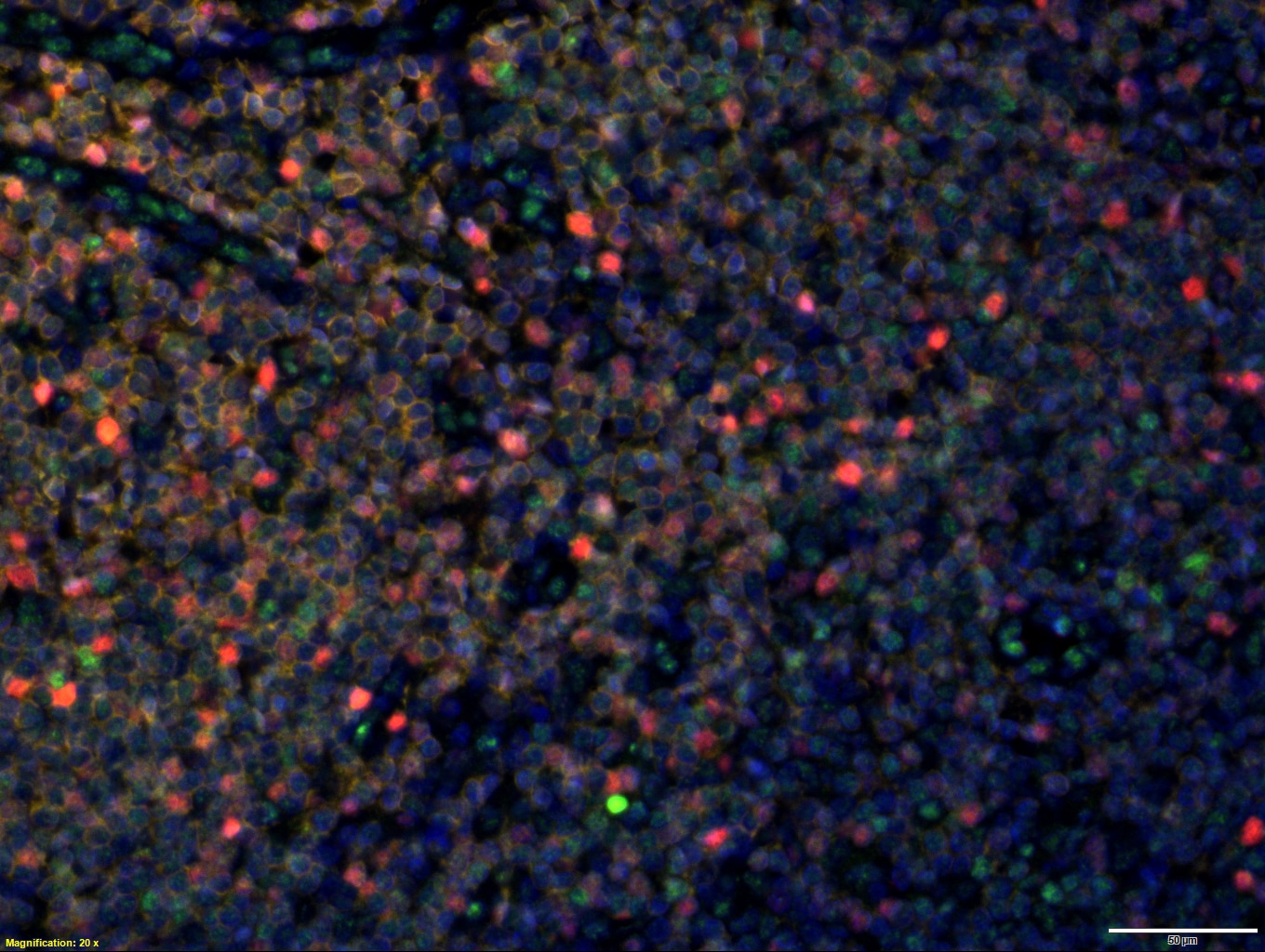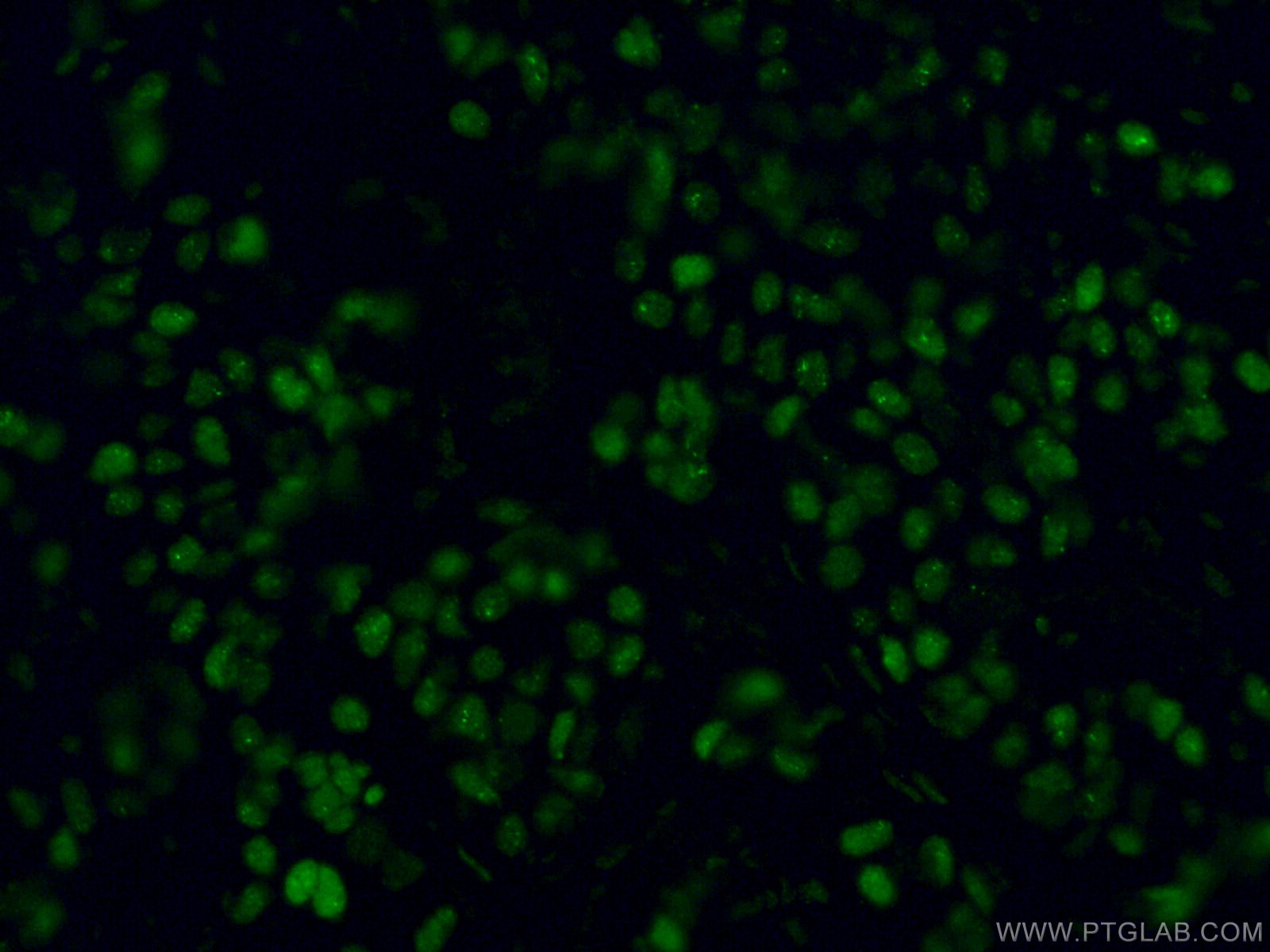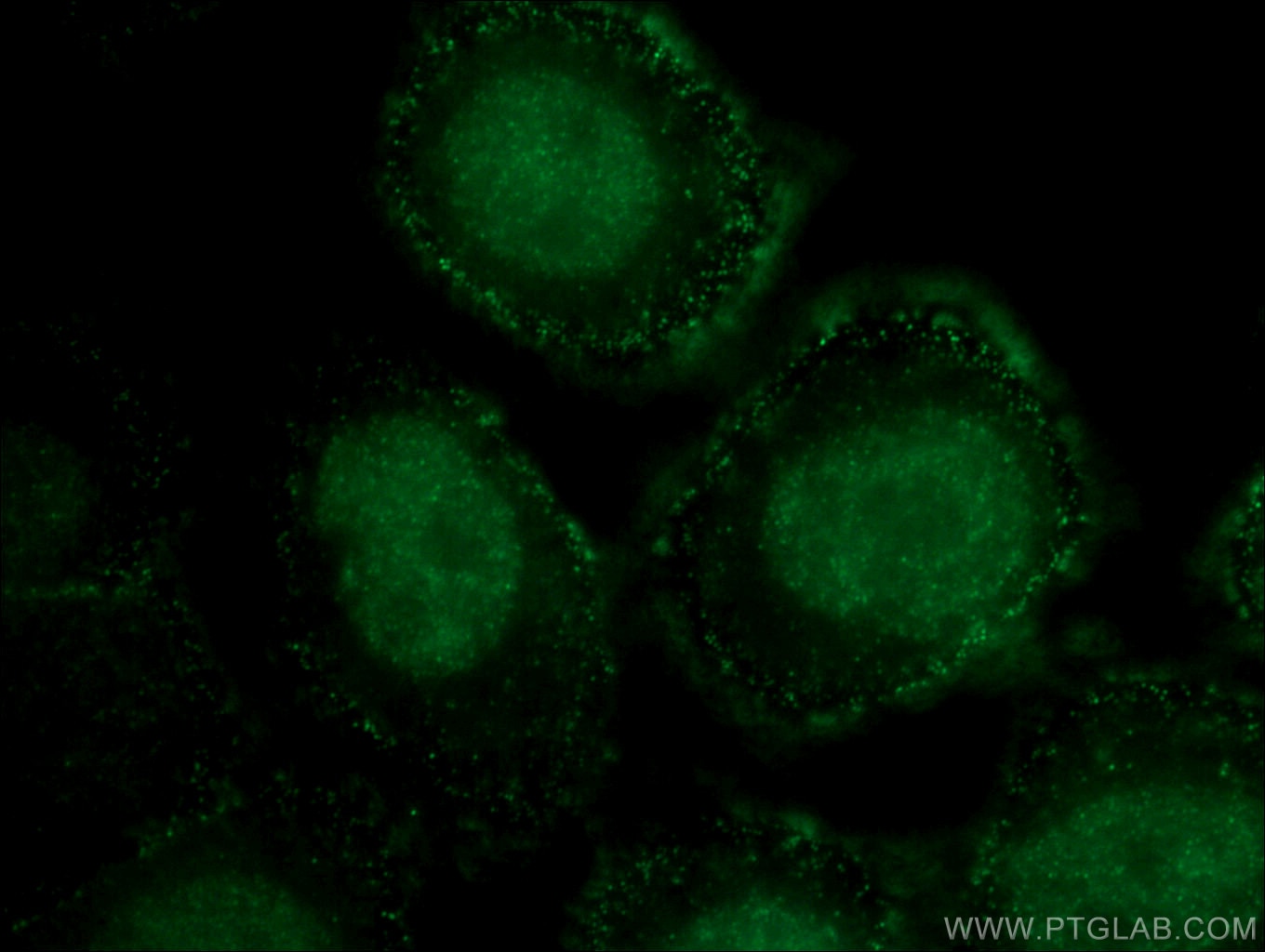Tested Applications
| Positive WB detected in | MCF-7 cells, Jurkat cells, RAW 264.7 cells |
| Positive IHC detected in | human breast cancer tissue, human colon cancer tissue Note: suggested antigen retrieval with TE buffer pH 9.0; (*) Alternatively, antigen retrieval may be performed with citrate buffer pH 6.0 |
| Positive IF-P detected in | human breast cancer tissue |
| Positive IF/ICC detected in | MCF-7 cells, HepG2 cells |
Recommended dilution
| Application | Dilution |
|---|---|
| Western Blot (WB) | WB : 1:1000-1:6000 |
| Immunohistochemistry (IHC) | IHC : 1:50-1:500 |
| Immunofluorescence (IF)-P | IF-P : 1:50-1:500 |
| Immunofluorescence (IF)/ICC | IF/ICC : 1:400-1:1600 |
| It is recommended that this reagent should be titrated in each testing system to obtain optimal results. | |
| Sample-dependent, Check data in validation data gallery. | |
Published Applications
| WB | See 13 publications below |
| IHC | See 2 publications below |
| IF | See 6 publications below |
| CoIP | See 1 publications below |
Product Information
66400-1-Ig targets GATA3 in WB, IHC, IF/ICC, IF-P, CoIP, ELISA applications and shows reactivity with human, mouse samples.
| Tested Reactivity | human, mouse |
| Cited Reactivity | human, mouse, rat, pig |
| Host / Isotype | Mouse / IgG2a |
| Class | Monoclonal |
| Type | Antibody |
| Immunogen |
CatNo: Ag0174 Product name: Recombinant human GATA3 protein Source: e coli.-derived, PGEX-4T Tag: GST Domain: 224-442 aa of BC003070 Sequence: PYVPEYSSGLFPPSSLLGGSPTGFGCKSRPKARSSTGRECVNCGATSTPLWRRDGTGHYLCNACGLYHKMNGQNRPLIKPKRRLSAARRAGTSCANCQTTTTTLWRRNANGDPVCNACGLYYKLHNINRPLTMKKEGIQTRNRKMSSKSKKCKKVHDSLEDFPKNSSFNPAALSRHMSSLSHISPFSHSSHMLTTPTPMHPPSSLSFGPHHPSSMVTAM Predict reactive species |
| Full Name | GATA binding protein 3 |
| Calculated Molecular Weight | 443 aa, 48 kDa |
| Observed Molecular Weight | 50 kDa |
| GenBank Accession Number | BC003070 |
| Gene Symbol | GATA3 |
| Gene ID (NCBI) | 2625 |
| RRID | AB_2881774 |
| Conjugate | Unconjugated |
| Form | Liquid |
| Purification Method | Protein A purification |
| UNIPROT ID | P23771 |
| Storage Buffer | PBS with 0.02% sodium azide and 50% glycerol, pH 7.3. |
| Storage Conditions | Store at -20°C. Stable for one year after shipment. Aliquoting is unnecessary for -20oC storage. 20ul sizes contain 0.1% BSA. |
Background Information
GATA3 is a transcriptional factor that binds to the enhancer elements of all 4 T-cell antigen receptor genes. GATA3 is highly expressed in naive, freshly activated cells and Th2 lineage cells and thought to be necessary and sufficient for Th2 cytokine gene expression. GATA3 and TBET interfer with each other to regulate gene expression.
Protocols
| Product Specific Protocols | |
|---|---|
| IF protocol for GATA3 antibody 66400-1-Ig | Download protocol |
| IHC protocol for GATA3 antibody 66400-1-Ig | Download protocol |
| WB protocol for GATA3 antibody 66400-1-Ig | Download protocol |
| Standard Protocols | |
|---|---|
| Click here to view our Standard Protocols |
Publications
| Species | Application | Title |
|---|---|---|
Drug Resist Updat GATA3 mediates doxorubicin resistance by inhibiting CYB5R2-catalyzed iron reduction in breast cancer cells | ||
Cardiovasc Diabetol BAG3 promotes proliferation and migration of arterial smooth muscle cells by regulating STAT3 phosphorylation in diabetic vascular remodeling | ||
J Ethnopharmacol Therapeutic effects and mechanisms study of Hanchuan Zupa Granule in a Guinea pig model of cough variant asthma. | ||
Pharm Biol Modified BuShenYiQi formula alleviates experimental allergic asthma in mice by negative regulation of type 2 innate lymphoid cells and CD4 + type 9 helper T cells and the VIP-VPAC2 signalling pathway | ||
Int Arch Allergy Immunol Lack of WDFY4 Aggravates Ovalbumin-Induced Asthma via Enhanced Th2 Cell Differentiation. | ||
Evid Based Complement Alternat Med Astragali Radix-Coptis Rhizoma Herb Pair Attenuates Atherosclerosis in ApoE-/- Mice by Regulating the M1/M2 and Th1/Th2 Immune Balance and Activating the STAT6 Signaling Pathway. |
Reviews
The reviews below have been submitted by verified Proteintech customers who received an incentive for providing their feedback.
FH Renan (Verified Customer) (08-18-2022) | The fluorescence staining was noticeable, but the intensity was not so high, after using a tyramide signal amplification (TSA) protocol. The picture shows a lung lymphoid follicle, part of a 4-um FFPE tissue section. Heat-induced antigen retrieval was done with TRIS-EDTA buffer (pH 9.0) and GATA-3 was stained using a tyramide-conjugated Alexa Fluor 488 dye. CD3 is stained in yellow.
 |
























